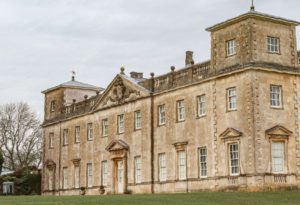Fred’s Horses
“There was a meeting of two days at Newmarket this time of year, to see the sweetest little horse run that ever was; his name is Gimcrack, he is delightful.”
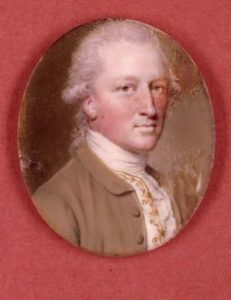
Portrait Miniature of Frederick St. John, 2nd Viscount Bolingbroke by John Smart
So wrote Lady Sarah Bunbury to her friend Susan Fox-Strangeways on July 12th 1765. Gimcrack was Frederick St John, 2nd Viscount Bolingbroke’s most famous racehorse, a small grey stallion standing a modest 14 hands high.
Fred, an inveterate gambler, owned over seventy horses during the course of his career as a racehorse owner. It was a ruinously expensive hobby, for whilst a horse might win four our five hundred guineas on one race, the cost of keeping and training them was far higher. It was also a passion that was looked down upon by some elements of high society because it was felt that to spend lots of time in the company of jockeys and grooms coarsened gentlemen in speech and behaviour.
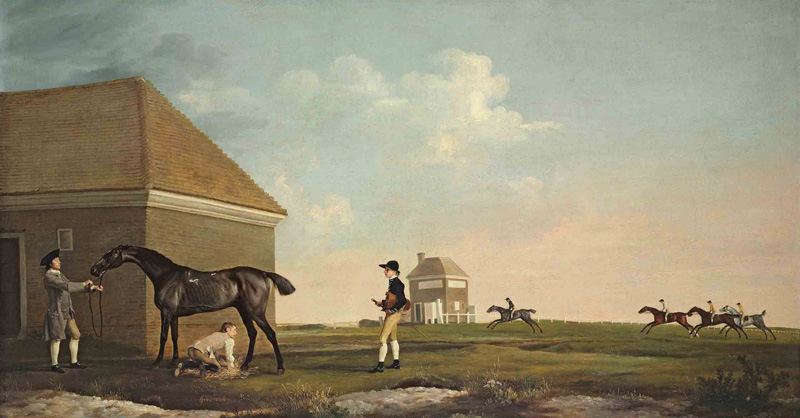
Gimcrack at Newmarket with his trainer, stable lad and jockey by George Stubbs
The artist George Stubbs painted Gimcrack in front of the rubbing down house at Newmarket with his trainer, stable lad and jockey in the black Bolingbroke colours. However, Frederick sold the horse after only three months when it was beaten for the first time. He might have done better to hold on to him; Gimcrack went on to win over £9000 in prize money.
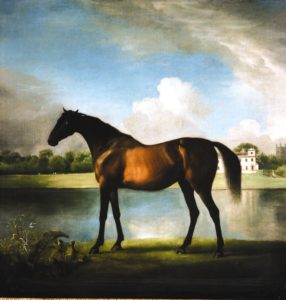
Lord Bolingbroke’s brood mare in the grounds of Lydiard Park by George Stubbs
Frederick was one of Stubbs’ earliest patrons and the artist also captured his racehorses Lustre, Molly-Long-Legs, and Hollyhock. Nor was Stubbs’ work restricted to racehorses; he also painted “Lord Bolingbroke’s favourite hunter,” a picture which shows Lydiard House and church in the background and hangs in the Library. Frederick built an extensive new set of stables at Lydiard to accommodate some of the horses he owned and bred including The Bolingbroke Grey, The Bolingbroke Bay and various Arabian sires for breeding. He rode his own horses too. In June 1765 London Chronicle reported: “On Wednesday last, the Lord Viscount Bolingbroke had the misfortune to be thrown from his horse… from which he received a violent contusion of the leg.”
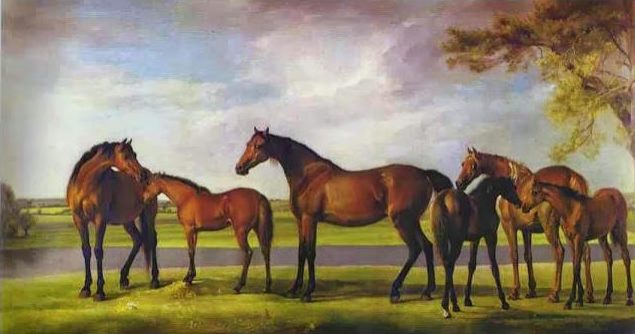
Group of Mares and Foals in the grounds of Lydiard Park by George Stubbs
Frederick, who named one of his horses Lady Bolingbroke in honour of his wife and two more Kitty and Polly, after his mistresses was eventually bankrupted by his gambling debts and obliged to sell another of his most famous horses, Highflyer, to Richard Tattersall to settle his debts.
